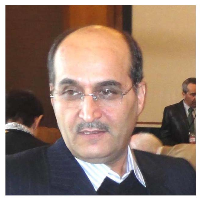Reconstructing the Sequence of Discharge and Paleotemperature of Jajroud Basin Based on Geochemistry and Sedimentology of Terraces
Terraces are important archives for paleontology. In this research, the paleotemperature changes and discharge frequency of Jajroud basin in the northeast of Tehran have been investigated based on the sedimentology and geochemistry characteristics of the reservoirs. First, the sediment samples were analyzed with calcimetry, EC, XRF, and PH techniques, and then these data were correlated with the indices of salinity, chemical weathering, acidity, and maturity of the sedimentary layers of the defenses. The results show three periods of flow changes, during the alternation of cold and warm periods of the river. One is at the peak of the glacial period, when the accumulation of snow and ice in the mountainous part has reduced the discharge (before the Holocene). In the second stage, by passing from the glacial period to the warm period (11 to 8 thousand years ago), Jajrud has experienced its highest discharge. Because the melting of glaciers has been accompanied by rainfall. The existence of very coarse layering in the early Holocene terraces indicates the occurrence of floods in this period. In the third stage, the dominance of recent hot and dry conditions (8 thousand years ago until now) and the lack of glacial deposits have led to a decrease in river flow. Based on this, the geochemical studies of the reservoirs can provide valuable data to recover the dynamic changes of flow and discharge during the Quaternary period and can be generalized to other similar basins.
-
Identifying the active tectonic areas of the eastern Caspian coast using radar remote sensing
Mohamad Fathollahzadeh *, , Abolghasem Goorabi, Mehran Maghsoudi, Mernoosh Ghadimi
Journal of of Geographical Data (SEPEHR), -
Seismic Hazard Assessment of Badakhshan Region (Northeast Afghanistan)
Khadijeh Mohammadi, Ebrahim Moghimi, Mehdi Zare, *, Masoud Mojarab
Journal of Geography and Environmental Hazards,



